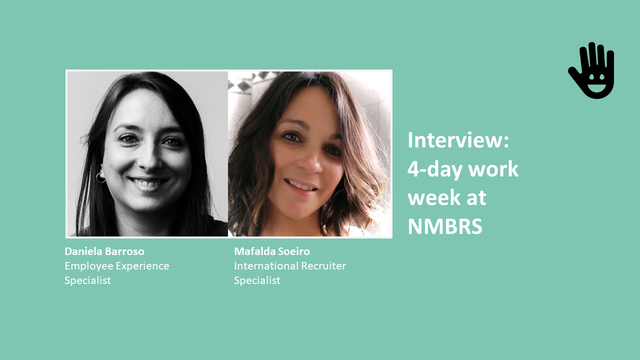5 Ways to Increase Employee Survey Participation
2022-11-01
Struggling to get your employees to participate in your workplace surveys? We’ve listed five solutions you can implement.
Employees are a critical component of any business. Several studies have already highlighted the importance of investing in people as a way to increase commitment, loyalty, and productivity across all fronts of the organization—otherwise known as employee engagement. One way for managers to ensure they are getting accurate and adequate insights from their employees is by incentivizing survey participation in the workplace. Many organizations rely on employee Net Promoter Score (eNPS) as a means of evaluating survey results and measuring employee engagement.
eNPS in a Nutshell
An eNPS involves asking employees simple questions to discern how engaged an employee is. Some of the questions employers use include “How likely are you to refer a friend to work for the company?” and “How likely are you to recommend us as a potential employer to a contact?” These questions would then be rated by employees on a scale of 0–10, with 0 for least likely and 10 for extremely or most likely. The scores are then totalled. Employees who respond in a range of 0–6 are marked as “Detractors,” 7 or 8 as “Passives,” and 9 or 10 as the “Promoters.”
The percentage of each category is calculated, and then the percentage of Detractors is subtracted from the percentage of Promoters to get the eNPS score. In general, an eNPS score between 10 and 30 is considered good, and over 50 is excellent. To date, Zoom is the employer with the top eNPS: 94, with 95% of employees willing to recommend the company to friends.
While a survey is a simple tool that can be quickly implemented within organizations, it can still be challenging to increase employee participation. Employees often view surveys as tedious, time-consuming, and thankless. It’s hard to blame them. Traditional employee surveys can be long and seem pointless.
“Companies should focus their employee engagement surveys on specific drivers of performance,” said Iliyana Hadjistoyanova, Sr Principal, Research at Gartner.
Low survey response rates mean that the true sentiments of your employees have not been captured, and it is difficult to draw useful conclusions from a small sample. Additionally, low survey response rates can signal a lack of employee engagement within a company’s feedback processes.
How to Encourage Employee Survey Participation
Here are some ways to encourage employees to participate in surveys:
1. Communicate the purpose of the survey
HR teams often send out employee surveys without providing any context. An employee will get an email indicating they should fill out the attached survey. Employees who don’t see the point in this exercise are likely to ignore the email. Therefore, those in charge of conducting the surveys must communicate the intention of the survey, explaining:
- The survey goal
- The result analysis
- Incentive packages, if any
- Specific date/time, location, and manner of survey
During the survey, assigned point persons may also be needed to follow up with staff and address any potential questions or concerns of respondents. Communication can help build engagement.
2. Ensure confidentiality
One of the reasons employees avoid participating in surveys is the fear they might be singled out when they provide criticisms or point out areas for improvement within the organization. Employees need assurance that they can speak out freely without exposing their identity or endangering their position in the company. This allows the survey team to also get reliable and accurate feedback, both good and bad, from employees.
3. Provide incentives
Employees appreciate rewards for their efforts. When employers incentivize survey participation, it can achieve two things:
- Send the signal that the company values employee feedback enough to exchange it for something of value.
- Incentives can encourage participation in exchange for their time spent answering the survey.
Rewards and incentives don’t have to be grand or seem like a bribe; all that is required is a small token of appreciation, such as a gift card or an extended lunch break.
4. Make the survey and the results accessible
HR teams should make the surveys easily accessible to the respondents. Many in today’s workforce are digitally savvy and prefer surveys that they can access and complete quickly and conveniently. Here’s how you can make the survey accessible:
- Make the surveys optimized for mobile, tablet, and desktop.
- Surveys should work on various operating systems.
- Surveys should factor in inclusivity and diversity by offering multi-language support and disability access.
Similarly, employers should also give employees the right to access the results of the survey. Sharing the results can indicate that the company is serious about employee concerns, and the survey is not merely an exercise. Use the results as an opportunity to open the floor for more feedback from your employees.
5. Act on the findings
Perhaps one of the most critical factors that help encourage employee survey participation is when the company acts to address the concerns raised. In taking action, employers demonstrate the true value of survey participation and staff will be encouraged to participate in the future. This fosters trust and transparency among employees and leaders at the different levels of the company.
Though it may seem like an obvious solution, leaders should avoid making survey participation mandatory, as this can have a significant impact on results. Employees who are forced to participate are likely to run through the survey without giving genuine insights, and this can skew the survey results. The participation rate itself is a useful measure of employee engagement, so the focus should not be on enforcement but rather on encouragement. Leaders, however, can lead by example.
If you found this article useful, please share!
Author Bio
Dean Mathews is the founder and CEO of OnTheClock, an employee time tracking app that helps over 15,000 companies all around the world track time.
Dean has over 20 years of experience designing and developing business apps. He views software development as a form of art. If the artist creates a masterpiece, many people’s lives are touched and changed for the better.
When he is not perfecting time tracking, Dean enjoys expanding his faith, spending time with family and friends, and finding ways to make the world just a little better.
See More Posts
Platform
Features
Tap My Back @2025. All rights reserved.






